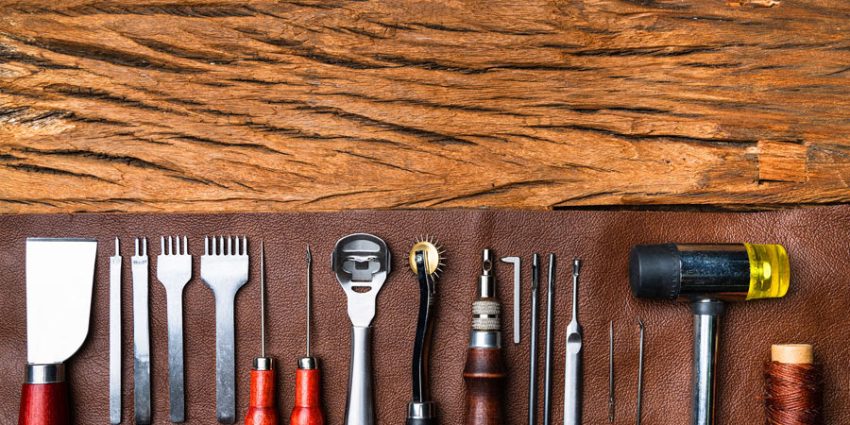In a world increasingly dominated by machines and technology, the humble hand tool still holds a revered place in the art of upholstery. While technological advancements have undeniably transformed many aspects of craftsmanship, the enduring importance of hand tools in upholstery remains unmistakable. There’s something irreplaceable about the human touch in every piece, something that machines just can’t replicate.
Historical Context
The use of hand tools in upholstery dates back centuries, with many traditional tools still in use today. Think of the classic tack hammer, the webbing stretcher, and the ever-reliable needle and thread. These tools have been the backbone of upholstery for generations, evolving over time but never losing their essence. They are the silent witnesses to the evolution of furniture design, bearing the marks of countless projects and skilled hands.
Advantages of Hand Tools
So, what makes hand tools so indispensable? For one, they offer unmatched precision and control. When you’re working on a detailed piece, the finesse that hand tools provide is simply unparalleled. You can make finer adjustments and achieve the kind of detailed work that machines often miss.
Hand tools are also incredibly versatile. From cutting fabric to tacking it into place, there’s a hand tool for every task. This versatility means that an upholsterer can tackle a wide range of projects with just a few essential tools. Whether you’re reupholstering an antique chair or crafting a custom headboard, hand tools rise to the occasion, adapting to the unique demands of each job.
Craftsmanship and Artistry
Beyond their practical benefits, hand tools are the conduits of artistic expression in upholstery. They allow artisans to infuse their work with creativity and personal flair. The intricate designs and patterns achievable with hand tools showcase the depth of skill and artistry in the upholstery craft. A perfectly placed stitch, a smoothly stretched fabric, a meticulously tacked edge—these are the hallmarks of hand tool craftsmanship.
Imagine the detailed tufting on a classic Chesterfield sofa or the elegant pleating on a custom-made drapery. These elements, rich in texture and complexity, are often best executed with hand tools. The tactile feedback from using hand tools allows upholsterers to feel their way through the material, ensuring every detail is just right.
Ergonomics and User Experience
Using hand tools also offers ergonomic benefits, especially for those long hours of meticulous upholstery work. Unlike some bulky machinery, hand tools are designed to fit comfortably in the hand, reducing strain and fatigue. Professionals often praise the tactile experience of using hand tools, describing it as a more intimate and satisfying interaction with their work.
There’s a certain rhythm to working with hand tools that machines can’t replicate. The feel of a well-balanced hammer or the smooth action of a high-quality pair of shears becomes an extension of the craftsman’s own hands. This connection enhances the overall experience, making the process of upholstery as rewarding as the final product.
Integration with Modern Technology
In modern upholstery, hand tools and machinery aren’t mutually exclusive; they complement each other. Many contemporary workshops adopt a hybrid approach, seamlessly integrating hand tools with advanced machinery. For instance, while a machine might cut fabric with speed and precision, the final adjustments and finer details are often best handled with hand tools.
This blend of tradition and technology allows upholsterers to achieve efficiency without sacrificing the quality and artistry that hand tools bring to the table. It’s about finding the right balance—leveraging the strengths of modern technology while honoring the craftsmanship of hand tools.
Future Prospects
Looking ahead, the future of hand tools in upholstery seems bright. While technological innovations will continue to shape the industry, the value of hand tools is unlikely to diminish. Instead, we’ll see more innovations that enhance the usability of hand tools, making them even more efficient and user-friendly.
Trends such as sustainable craftsmanship and the resurgence of handmade goods further underscore the relevance of hand tools. As consumers increasingly seek unique, high-quality pieces with a personal touch, the demand for skilled artisans who master hand tools will grow.
Conclusion
Hand tools remain a cornerstone of modern upholstery, offering precision, control, and a touch of artistry that machines can’t replicate. Their enduring relevance is a testament to the craftsmanship and dedication that define the upholstery profession. As we continue to embrace new technologies, it’s essential to appreciate and preserve the timeless value of hand tools.
Whether you’re a seasoned professional or an aspiring craftsman, incorporating hand tools into your projects can elevate your work and keep the rich tradition of upholstery alive.

